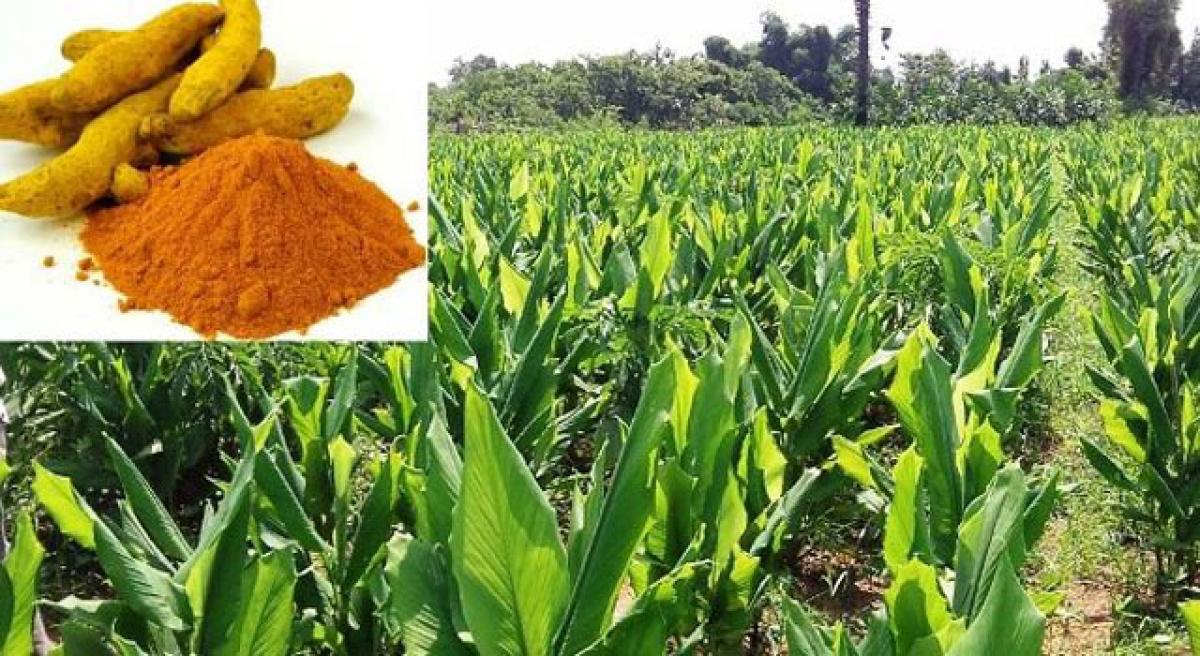Live
- Black Friday 2024: Top Gadget Deals You Can’t Miss – iPhone 16 for Rs 72,900 and More
- Some politicians attempting to divide Hindus for votebank: Former UP Minister
- Bangladesh's Deposed PM Sheikh Hasina Condemns Arrest of Hindu Leader Chinmoy Krishna Das, Demands Immediate Release
- Telangana DGE Revises SSC Exam Fee Payment Schedule for 2025
- ESA Proba-3 Mission Launch on ISRO's PSLV-XL Rocket: December 4, 2024
- MP Priyanka’s debut: Posts featuring Rahul, Kharge win hearts on social media
- 2025 Bollywood Movie Release Dates: Shahid Kapoor’s Deva in January to Alia Bhatt’s Alpha in December
- Shivraj Chouhan tells officials to ensure farmers get high quality fertilisers, seeds and pesticides
- Preamble of Constitution describes India’s collective spirit: Gopalkrishna Gandhi at Constitution Day lecture at JGU
- Centre to offload 25 lakh tonnes of wheat in open market to bring down price
Just In
Telangana State needs R&D centre for chilli, turmeric; not any board or park


The Telangana government is striving for a Turmeric Board at Nizamabad. The role of board on the lines of Tobacco Board in Guntur is to promote overseas marketing to recommend how much land to be cultivated to meet supply and demand to look after marketing problems, provide information on various aspects of the produce right from selection of cultivars to post-harvesting methods and provide a plat
The Telangana government is striving for a Turmeric Board at Nizamabad. The role of board on the lines of Tobacco Board in Guntur is to promote overseas marketing to recommend how much land to be cultivated to meet supply and demand to look after marketing problems, provide information on various aspects of the produce right from selection of cultivars to post-harvesting methods and provide a platform for their produce.
The role of 'Park' like Spices Oark in Munnar in Kerala, on the other hand, is mainly to encourage entrepreneurs to produce value-added products, demonstrate to public about machinery on farming practices and provide information about various buyers in Indian and aboard. They don't do any research on region-specific crops.
However, crops-specific research institute like Central Tobacco Research Institute (CTRI-ICAR) and Oil Palm Research Institute at Pedavegi in West Godavari district carry out research on various topics from cultivation and marketing aspects etc. Therefore for Telangana, a turmeric and chilli crops research institute serves the purpose of guiding farmers in various aspects of cultivation.
The proposed research institute for two main spice crops of Telangana –turmeric and chilli – could serve better the interests of famers in various ways. First, the selection of better strains which have high yields of curcumin oleoresin for turmeric. In the case of strains, chilli high capsaicin (pungent/hot factor) and also different strains of high natural food colors (like carotenoids) and less pungent factors are available.
The latter are usually called tomato chillies. These strains/ hybrids need to be propagated. For example, Alleppey (Kerala) variety of turmeric has high curcumin (approx 6%) while our variety has only about 2% of curcumin. Curcumin is a most valued natural medicinal agent with antioxidant and several other biological activities. The agronomy factors and suitability of Telangana lands for these spices need to be examined.
Second, entomological aspects like pest attack during cultivation and post harvest storage is another aspect to be covered by the proposed research institute. Third, modern methods of harvesting using hand-used equipment need to be propagated. At the moment, the storage methods adopted are primitive. For chilli, cold storage godowns are not available. How to preserve by indigenous methods needs to be examined.
Third, rapid methods for estimation of curcumin and its oleoresin, and in the case of chilli, capsaicin (pungent factor of chili) need to be researched and propagated. Fourth, at least one processing unit for converting turmeric and chilli into powder by small machines is essential. Agricultural/Chemistry graduates would manage these units. This will be another activity by research institute. These technologies are to be demonstrated to entrepreneurs and farmers.
Fifth, most importantly, there is growing tendency to adulterate in several ways. Unethical practice is to extract oleoresin both in turmeric and chilli and then sell the residual turmeric and chilli powder. Turmeric powder even after extraction retain its original chracteresics. Sometimes the residue is mixed with metallic/organic yellow powder to get attractive color. Recent reports revealed that practically all chilli powders are mixed with stems of chilli powder. Rapid method of detection of adulterated samples must be researched.
Agricultural economics of these two spices involve how much land these spices is to be grown for better marketability, fixation of the prices before the cultivation, support by Govt. to get the promised fixed price is to be assured. Market yards are in primitive stages. In summer, we may get rain any time. This year chilli in market yards got drenched or submerged in rain water.
Suitable facilities for storage at market yards should be set up. Selection of high-yielding varieties, agronomy, entomology, prevention and detection of adulteration, chemical processing with small units, fixing of price etc and export promotion will be the objective, together with the extension programme for farmers, which will be a boon to farmers of Telangana and entrepreneurs.
Therefore, Telangana should try for a research institute for turmeric and chilli rather than a 'Board' or 'Park' for cultivation of turmeric, chilli (high pungent variety or high food coloring variety). (Nagaiah is a Senior Principal Scientist at IICT, Hyderabad. Srimannarayana is a retired Professor of Chemistry, OU)
By Dr K Nagaiah & Prof G Srimannarayana

© 2024 Hyderabad Media House Limited/The Hans India. All rights reserved. Powered by hocalwire.com






